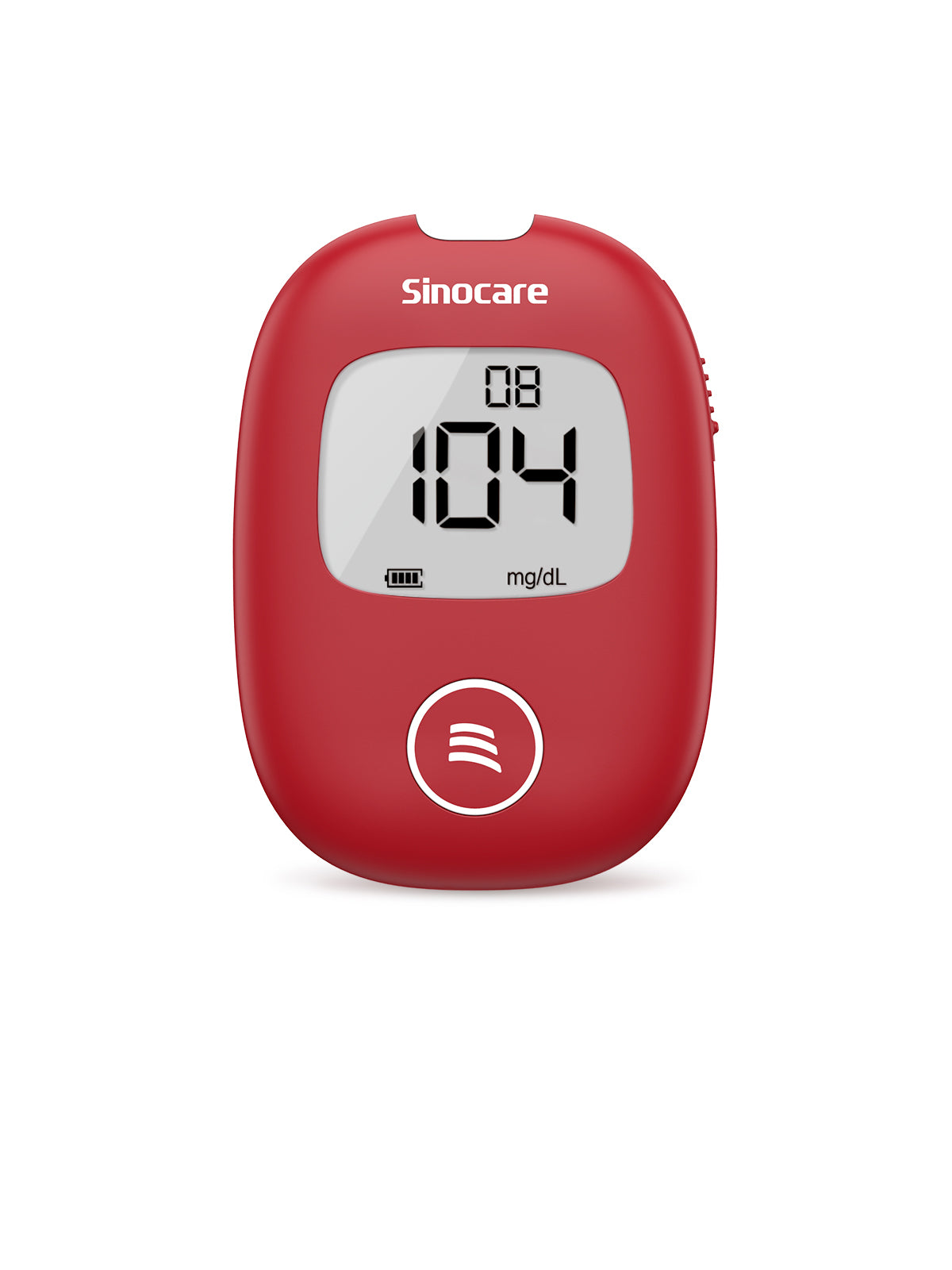Diabetes is a chronic disease that is rapidly increasing in prevalence worldwide. It is characterized by high blood glucose levels and contributes to many other disease states, such as vision problems, kidney disease, damage to blood vessels, and skin diseases. [1]
In this article, we will talk about the consequences of removing body hair with wax strips in diabetic patients, why the skin of these patients is often weakened, and some useful alternatives to get rid of excess hair.
What are wax strips?
Wax strips or depilatory wax strips are a quick and easy method of removing body hair from virtually any area of the body, including the crotch or face but usually large areas such as the legs or back. [2]
These strips consist of resistant paper or plastic bands that adhere to hot or cold wax previously placed on the hairy area of the body. Sometimes, these strips come ready to use with the wax attached. The individual who wants to use them only has to remove a protective cover and stick it to the hairs.
Reason 1: Diabetics are difficult to feel skin pain
In diabetics, the body's functioning is very different from that of a healthy person, which occurs for various reasons. The best known are that hyperglycemic states induce a pathological mechanism known as the production of advanced glycation end products (AGEs). [4]
These advanced glycation products or PGA affect many organs and tissues (the retina, the renal glomeruli, the endothelium of blood vessels, etc.), including the peripheral nerves, causing skin sensitivity loss.

This is especially important in the lower extremities, which are often more susceptible to injuries or scratches. In diabetic patients, most skin infections usually occur on the feet or legs, where a lot of hair also grows, and hair removal is often performed.
Reason 2: Diabetics are healing more slowly
In diabetics, constant and persistent hyperglycemia hinders collagen's correct and necessary formation in the healing processes. [5]
Although it seems to be a phenomenon typical of wounds, healing is a physiological process. Even without previous wounds, our body will renew the tissue components (collagenous, elastic fibers, glycosaminoglycans, capillaries, etc.).
Small abrasions occur on the skin when a person removes the wax strips in hair removal. Some of these abrasions are so small that they are only visible under a microscope.
Under normal conditions, these minor abrasions heal quickly. In a matter of hours or days, the microabrasions close, and the tissue restores its morphology, preventing bacteria from invading the deep layers.

In diabetics, the formation of new collagen molecules occurs more slowly. This is why diabetics tend to develop more facial wrinkles than non-diabetics.
Reason 3: Diabetics are at higher risk of infection
The hyperglycemia typical of diabetes favors the proliferation of pathogenic bacteria and fungi. This predisposes you to severe infections. [6]
If wax strips are used on weakened skin (such as diabetics), the superficial layers lose continuity, and bacteria from outside can easily enter the tissues.

Similarly, when pulling out hairs at the root, the tiny cavity where the hair follicle becomes the perfect place for bacteria to multiply and cause infection. If the bacterial inoculum overcomes the body's immune defense mechanisms, an infection could be potentially serious for the patient. [7]
When can diabetic wax be used?
Excess body hair is unsightly and uncomfortable in many cases, so removing it regularly is usually a positive thing, and being diabetic is not a contraindication to hair removal. Still, it should be done with great caution. [8]
Here a major dilemma is reached: can diabetics use wax strips?
The question should focus on when and how to use this method to remove body hair, especially in people with a tendency to have a lot of body hair.
Some tips that may be helpful include the following:
1. Evaluate what other less aggressive methods exist to remove body hair
Wax strips are effective for removing excess body hair but are also somewhat harsh on the skin. It would be ideal if other less traumatic methods could be used, such as depilatory cream, laser hair removal, or even razor blades.
Wax strip hair removal should be reserved when other methods are unavailable, when the sugar level is controlled or when the skin situation is not so serious.
2. How often should I wax?
The growth rate of body hair is highly variable, not only from individual to individual but in various regions of the body. An individual without complications from diabetes could have hair removal done frequently or when they feel it is appropriate.
However, if diabetes is advanced, it is advisable to postpone shaving a little, especially if they are done with wax strips.
3. What areas of the body really require hair removal with wax strips?
The hair that grows on the legs differs from that on the chest, armpits, or back. Each of them grows at a different rate and density. Suppose the region is small, such as the mustache or bikini area. In that case, hair removal can be done with razors, reserving more intense methods such as wax strips or depilatory cream for larger areas, such as the legs or thighs.
The proper method for using wax strips
It is recommended that each diabetic patient see their doctor regularly and constantly monitor their blood glucose levels. If the medical status is positive or stable, this patient can make use of wax strips to remove body hair following specific recommendations:
A good hair removal practice for diabetics is to be aware of its pros and cons, risks, and possible complications.
Patch testing or temperature testing is advised first. This helps measure whether the skin can sense the true temperature of the wax and rule out cutaneous nerve problems.
It is important to use soft wax for smooth skin. Wax types vary in their adherence and melting temperature. If the wax is very hard, it could pull the underlying skin with more force and cause small injuries in weakened tissue.
Applying proper aftercare is key. Many individuals who regularly use wax strips do not use skin moisturizers that remove body hair, and this is a mistake as the skin is left somewhat irritated.
Frequent questions
What to do if I have blisters or blood spots after waxing?
Small blood spots may appear after removing the wax strips. Skin irritation can manifest in more severe cases with red, painful blisters. Both are signs of skin weakness or excessive force when removing the wax strips. It is recommended to moisturize the area with cream and consult a doctor if the irritation persists or becomes complicated. [9]
Can I use depilatory cream?
Yes, and it is quite beneficial because although it does not remove the hair from the root, the skin suffers less irritation, and the hair usually grows smoothly. It is like shaving the hair without a razor but using a cream.
Can I use wax strips with gestational diabetes?
Yes, but evaluating other methods, such as razors or depilatory cream (laser is completely discouraged), is advisable. In theory, the state of hyperglycemia is transitory and is not sufficient to cause tissue damage. [10]
Final thoughts
Hair removal with wax strips is becoming increasingly popular as it is a fast, cheap, effective, and safe method of removing body hair. But in diabetic patients, it must be performed with great care. The ideal way is to consult with a doctor or visit a dermatologist.
References
1. Kerner W, Brückel J; German Diabetes Association. Definition, classification and diagnosis of diabetes mellitus. Exp Clin Endocrinol Diabetes. 2014 Jul;122(7):384-6. doi: 10.1055/s-0034-1366278. Epub 2014 Jul 11. PMID: 25014088.
2. What's the difference between hot wax and strip wax? By Brid McNulty, November 17 2020 https://lesalon.com/blog/whats-difference-between-hot-wax-and-strip-wax/#:~:text=Strip%20wax%20is%20what%20most,and%20is%20applied%20thickly%20too.
3. 8 Benefits of Waxing by Secret Spa (2022) https://secretspa.co.uk/benefits-of-waxing/#:~:text=The%20best%20known%20benefit%20of,in%20a%20day%20or%20two.
4. Vinik AI, Nevoret ML, Casellini C, Parson H. Diabetic neuropathy. Endocrinol Metab Clin North Am. 2013 Dec;42(4):747-87. doi: 10.1016/j.ecl.2013.06.001. PMID: 24286949.
5. Burgess JL, Wyant WA, Abdo Abujamra B, Kirsner RS, Jozic I. Diabetic Wound-Healing Science. Medicina (Kaunas). 2021 Oct 8;57(10):1072. doi: 10.3390/medicina57101072. PMID: 34684109; PMCID: PMC8539411.
6. Polk C, Sampson MM, Roshdy D, Davidson LE. Skin and Soft Tissue Infections in Patients with Diabetes Mellitus. Infect Dis Clin North Am. 2021 Mar;35(1):183-197. doi: 10.1016/j.idc.2020.10.007. Epub 2020 Dec 7. PMID: 33303332.
7. Falcone M, Meier JJ, Marini MG, Caccialanza R, Aguado JM, Del Prato S, Menichetti F. Diabetes and acute bacterial skin and skin structure infections. Diabetes Res Clin Pract. 2021 Apr;174:108732. doi: 10.1016/j.diabres.2021.108732. Epub 2021 Mar 5. PMID: 33676996.
8. Kang CN, Shah M, Lynde C, Fleming P. Hair Removal Practices: A Literature Review. Skin Therapy Lett. 2021 Sep;26(5):6-11. PMID: 34524781.
9. Quondamatteo F. Skin and diabetes mellitus: what do we know? Cell Tissue Res. 2014 Jan;355(1):1-21. doi: 10.1007/s00441-013-1751-2. Epub 2013 Dec 7. PMID: 24318789.
10. Coustan DR. Gestational diabetes mellitus. Clin Chem. 2013 Sep;59(9):1310-21. doi: 10.1373/clinchem.2013.203331. Epub 2013 Mar 27. PMID: 23536513.










Leave a comment
All comments are moderated before being published.
This site is protected by hCaptcha and the hCaptcha Privacy Policy and Terms of Service apply.